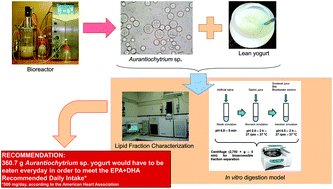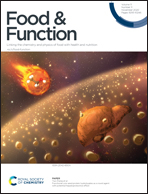The development of a novel functional food: bioactive lipids in yogurts enriched with Aurantiochytrium sp. biomass
Abstract
Western diets are poor in healthy n3 polyunsaturated fatty acids, such as docosahexaenoic acid. Since microalga Aurantiochytrium sp. is rich in docosahexaenoic acid, a functional food based on lean yogurt and this microalga was tested. This study entailed characterizing the lipid fraction and determining the fatty acid bioaccessibility. The tested yogurts (control and 2% w/w, Aurantiochytrium sp.) had differences. Docosahexaenoic acid was not detected in the control product, but it was the second most important fatty acid in Aurantiochytrium sp. and Aurantiochytrium yogurt, 29.7 ± 0.4% and 18.7 ± 2.0%, respectively. Based on the fatty acid profile only, an amount of 158.7 g of Aurantiochytrium yogurt in wet weight terms would be required to ensure an appropriate intake of healthy fatty acids. Generally, the fatty acid bioaccessibility was not high, remaining below 60–70% in almost all cases. Considering the docosahexaenoic acid bioaccessibility (44 ± 3%), an amount of 360.7 g of Aurantiochytrium yogurt would be advisable. A reasonable dietary prescription would be a daily consumption of 125 ml of Aurantiochytrium yogurt.



 Please wait while we load your content...
Please wait while we load your content...